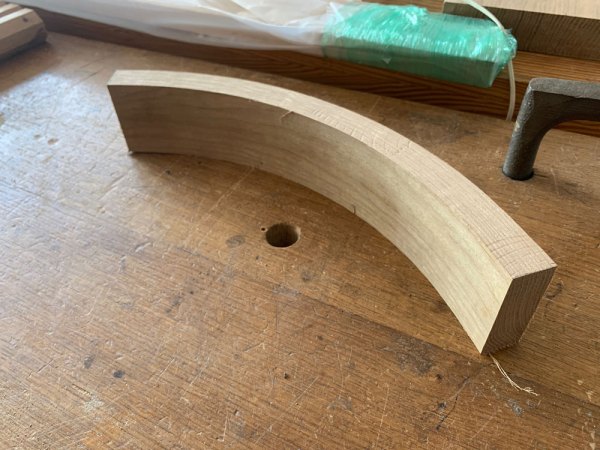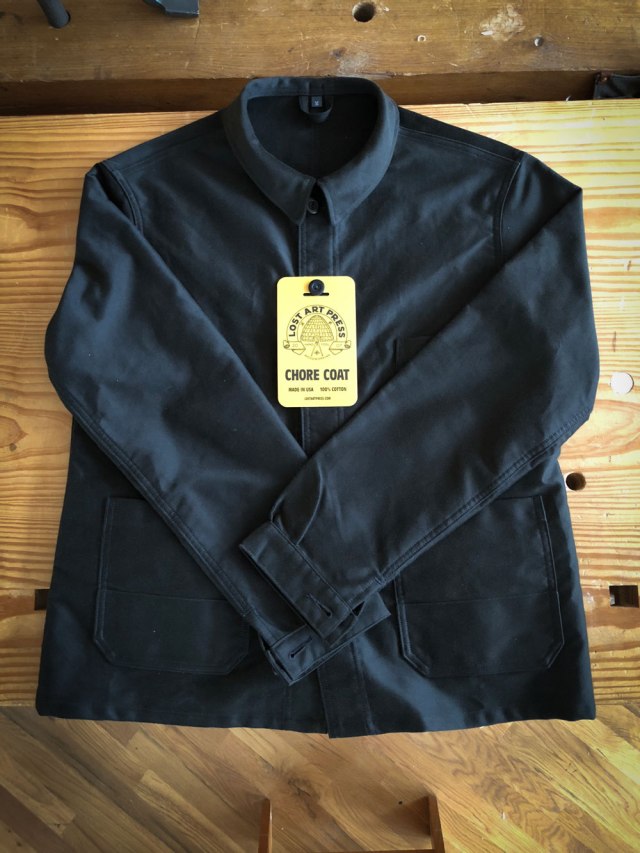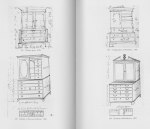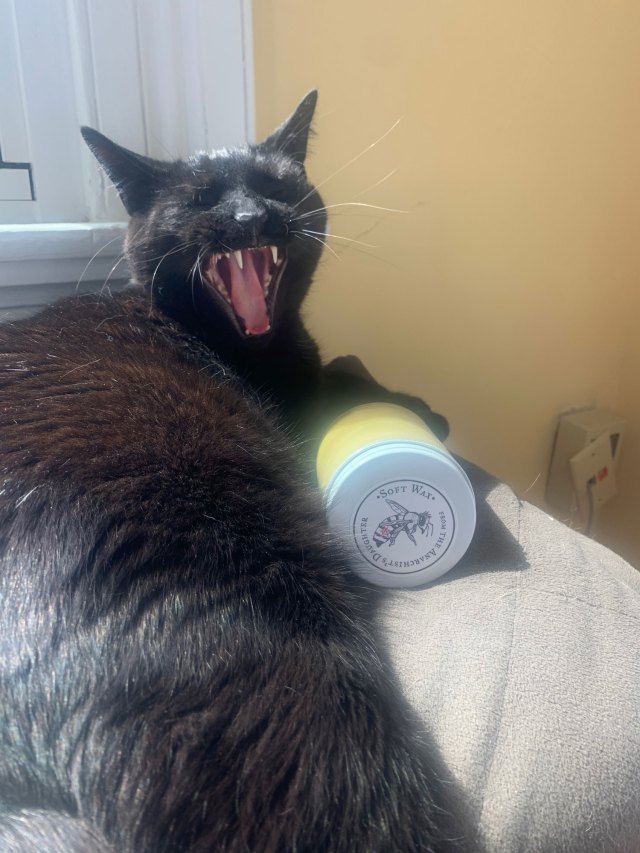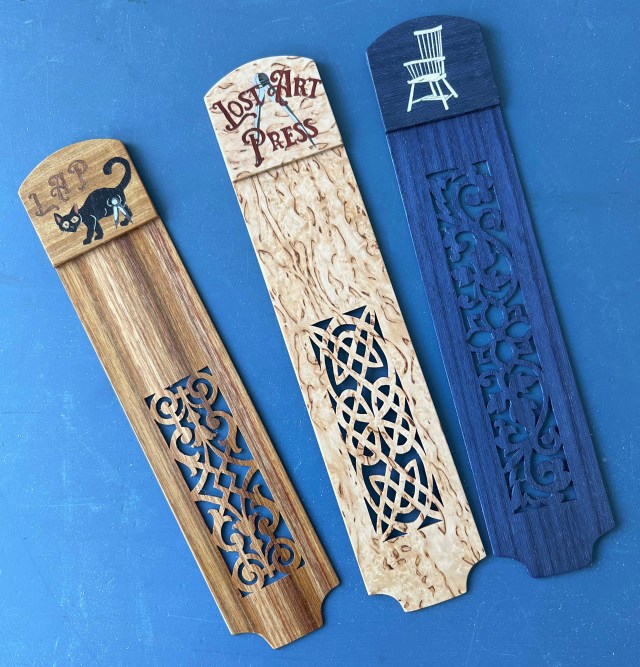A Little Bit About ‘Cold-bend Hardwood’ –
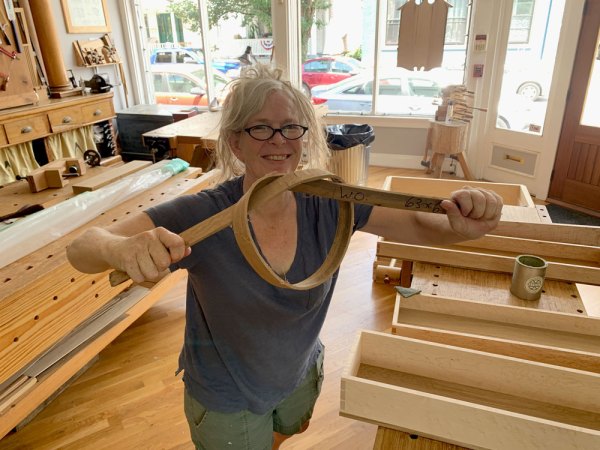
For the last nine years I’ve experimented a lot with “cold-bend hardwood,” which is also known as “compwood.” It’s basically wettish wood that can be bent radically when it’s at room temperature. And when it dries, it keeps its shape.
I first learned about the stuff from furnituremaker Jeff Miller, who showed it to me during a shop visit. Since then, I’ve purchased it from a variety of sources, including one local place that used to make its own (now they don’t) and Pure Timber LLC.
I don’t want to repeat the basic information you can get from Pure Timber. If you read the company’s descriptions and watch the videos you’ll get a good idea of what this stuff is capable of.
Instead, this blog entry is to talk about my experiences with the material and why I use the stuff.
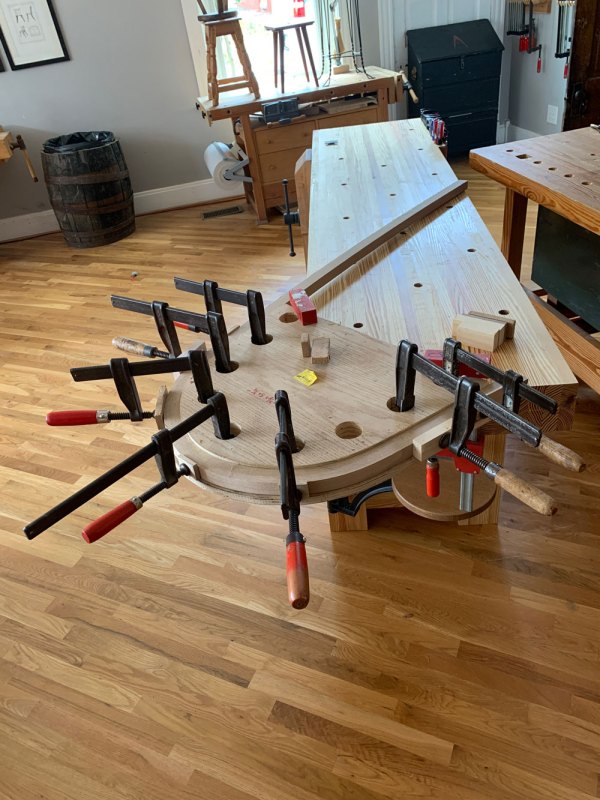
First, let’s get the economics out of the way. Cold-bend Hardwood is expensive when compared to green wood that you’ve split from a log or lumber that you’ve bought from the yard. However, the math works for me.
Obtaining, moving and storing green lumber when you live in a dense urban area is possible. I’ve done it many times. But my supply is sporadic. The tree service I work with keeps its eyes peeled for me, but street trees are not always the best for splitting.
Then there’s labor and time of splitting it out and containing the mess in our small garden. Then there’s the agony when a bend goes sideways. The stick breaks or delaminates – or cracks when drying.
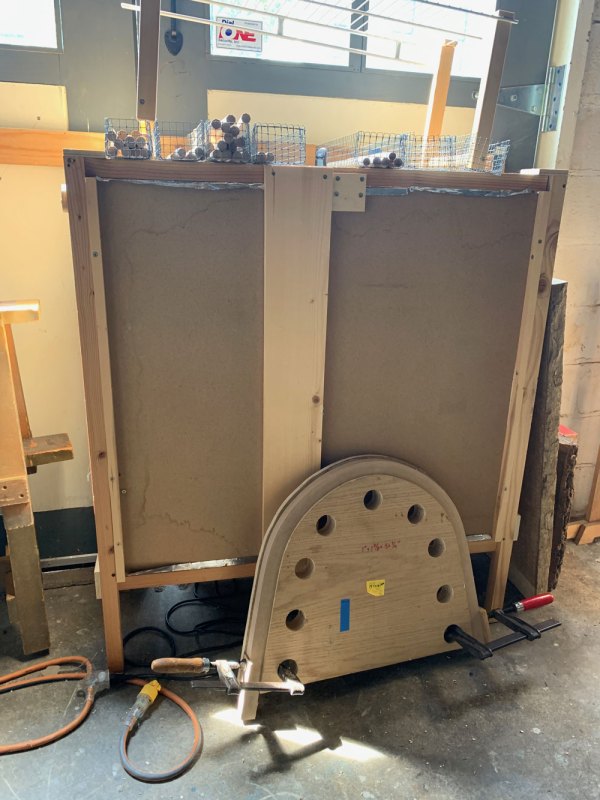
With Cold-bend Hardwood I’ve had only one bend fail in nine years. And there is almost no waste. It shows up in a box. I cut it to shape on the band saw and bend it in the form without a windlass or hydraulics. I then put it in an insulated box with a couple lightbulbs for a day (sometimes two days for big pieces). It comes out of the form ready to use with no springback.
For a chair, I need about $70 to $90 in Cold-bend Hardwood to make the armbow and crest. The time I save makes this expense work for me.
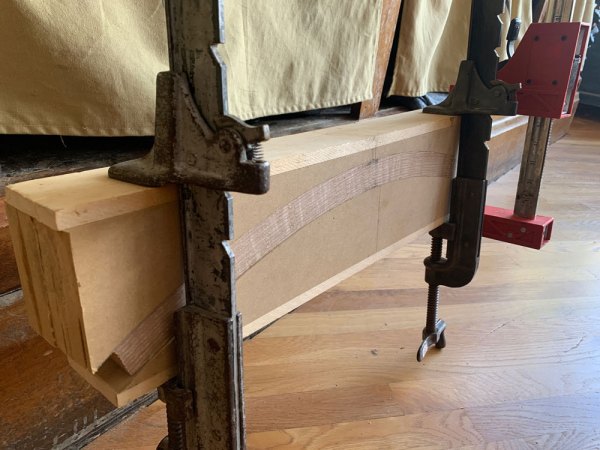
Cautions
Before you use the stuff, please read all the directions. Don’t try to machine the stuff on a jointer or planer when it’s wet. It will self-destruct. Cut it to size on the band saw. I use a single-point fence on my band saw for ripping. You can crosscut it by hand or with any power saw with no problem.
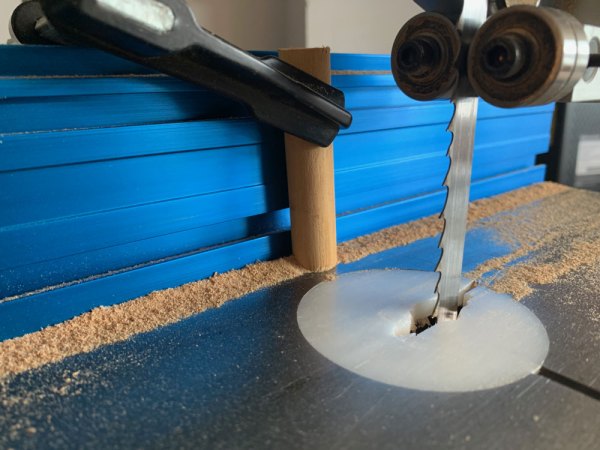
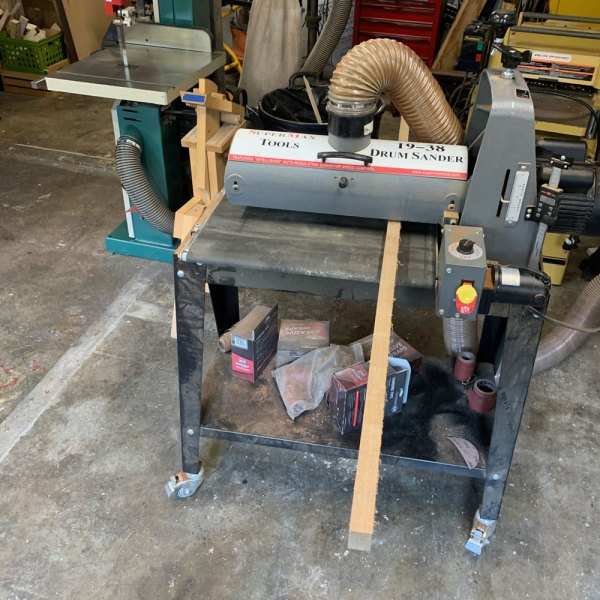
If you have a drum sander, you can use that to clean up the band saw marks before putting the stuff in the form.
After it’s dry, I have had decent luck working with it most electric and hand tools. I plane and scrape the stuff. But have your handplane prepared as if you are working curly stuff – you need a tight mouth or a tight chipbreaker. If you run into trouble, rasps and sandpaper will get you out of trouble.
My No. 1 recommendation: Start with a light cut with any machine or hand tool. See what it gets you. Learn from there.
It finishes fine – just like regular wood.
All in all, I like the stuff. I also like steambending furniture components when I can get the right wood. I don’t see the two techniques as mutually exclusive. Instead, it’s another option that is open to all of us. And there are some projects where Cold-bend Hardwood is the best solution for highly unusual bends.
— Christopher Schwarz
Disclaimer: As always, I purchase all my materials and have never received anything of value from Pure Timber (or any other manufacturer). This post is not sponsored by anyone.
